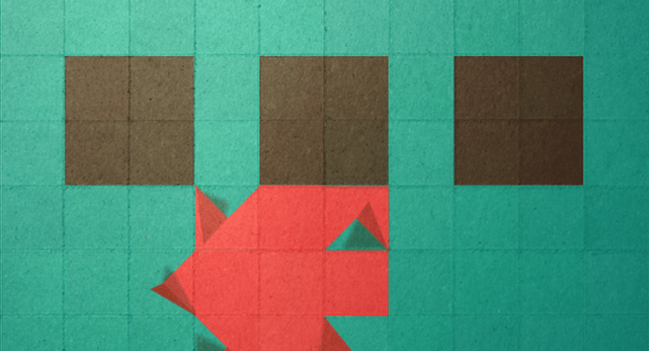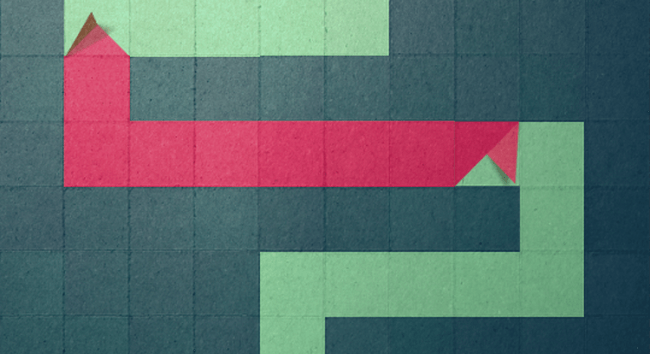- Wondering how to get Monopoly GO! free rolls? Well, you’ve come to the right place. In this guide, we provide you with a bunch of tips and tricks to get some free rolls for the hit new mobile game. We’ll …
Best Roblox Horror Games to Play Right Now – Updated Weekly
By Adele Wilson
Our Best Roblox Horror Games guide features the scariest and most creative experiences to play right now on the platform!The BEST Roblox Games of The Week – Games You Need To Play!
By Sho Roberts
Our feature shares our pick for the Best Roblox Games of the week! With our feature, we guarantee you'll find something new to play!All Grades in Type Soul – Each Race Explained
By Adele Wilson
Our All Grades in Type Soul guide lists every grade in the game for all races, including how to increase your grade quickly!
KAMI Review
I once tried my hand at a bit of Origami. I had a double free period during school, and there just happened to be a big ol’ book of Origami patterns lying on the library desk. Several sheets in, and I knew that it probably wasn’t my forte. KAMI, a new iOS game about folding paper to change its color, definitely backs up my theory that paper folding and me aren’t meant to be.
KAMI is all about filling the screen with the same color in as few moves as possible. It’s gorgeously styled and surprisingly complex, with plenty of rules and tactics available to get you through its 36 puzzles. It’s not massively exciting as such, and you won’t exactly spend days or hours afterwards thinking about it, but as a distraction for a bus ride or two, KAMI will keep you tapping.
On each level you’re provided with different colored paper that is overlapping all over the place. By tapping on the paper you can change its color, potentially causing it to merge with similar-colored paper around it. Using this method, you can tap-by-tap fill the entire screen with the same color. But there’s a catch – you only have a specific number of taps you’re allowed to make before you lose.
KAMI‘s paper-folding animations and general look and feel are great. It’s very easy to pick up and play, and resetting puzzles is as simple as a single tap. The way that the paper looks when folding out from your tap is really gorgeous, especially that final tap that expands all around the book. KAMI has managed to capture that feeling of paper-on-paper remarkably.

The Brave and the Fold
I once tried my hand at a bit of Origami. I had a double free period during school, and there just happened to be a big ol’ book of Origami patterns lying on the library desk. Several sheets in, and I knew that it probably wasn’t my forte. KAMI, a new iOS game about folding paper to change its color, definitely backs up my theory that paper folding and me aren’t meant to be.
KAMI is all about filling the screen with the same color in as few moves as possible. It’s gorgeously styled and surprisingly complex, with plenty of rules and tactics available to get you through its 36 puzzles. It’s not massively exciting as such, and you won’t exactly spend days or hours afterwards thinking about it, but as a distraction for a bus ride or two, KAMI will keep you tapping.
On each level you’re provided with different colored paper that is overlapping all over the place. By tapping on the paper you can change its color, potentially causing it to merge with similar-colored paper around it. Using this method, you can tap-by-tap fill the entire screen with the same color. But there’s a catch – you only have a specific number of taps you’re allowed to make before you lose.
KAMI‘s paper-folding animations and general look and feel are great. It’s very easy to pick up and play, and resetting puzzles is as simple as a single tap. The way that the paper looks when folding out from your tap is really gorgeous, especially that final tap that expands all around the book. KAMI has managed to capture that feeling of paper-on-paper remarkably.
The game starts off deceptively simple, but rapidly ramps up to taxing proportions. Each of the four sets of levels offers a new way to challenge the paper-folding concept, and by level nine of each set, you’ll be pulling your hair out trying to get those colors to align. Managing to get the “OK” rating on each level is eventually achievable, but getting the elusive “Perfect” ratings is something else.
As you play, however, you’ll begin to realize that there are set methods for beating specific puzzles. For example, you’ll find some puzzles that look like a massive mess initially; but there’s always some specific point that you need to start at that you can then expand away from, engulfing the colors around it in the meantime.
The most notable tactic is to connect squares together that are seemingly sitting all on their own. Obviously it’s a waste of a move to change the color of one block, so it’s always the case that you’ll want to change the space around that block to match said-block instead: essentially connecting that block up to the rest of the blocks from the outside. Little tricks like this are what KAMI is all about, and what the game really revels in.
Notably, KAMI isn’t exactly mind-blowing, or even exciting. It’s more of a calming, zen-like experience that never really does anything that will wow you, but is still rather pleasant. It’s also rather short, clocking in at less than an hour of play time – this is just another element that will lead to your closing it down when you’ve finished, and forgetting that it exists.
But for that brief period that it does exist in your life, KAMI does what it says on the tin very well. It’s simple yet challenging; minimalist yet elegant. And who knows – perhaps it’ll lead you into a life of paper folding and Origami that you never knew you enjoyed.

The good

The bad
More articles...
Monopoly GO! Free Rolls – Links For Free Dice
By Glen Fox
Wondering how to get Monopoly GO! free rolls? Well, you’ve come to the right place. In this guide, we provide you with a bunch of tips and tricks to get some free rolls for the hit new mobile game. We’ll …Best Roblox Horror Games to Play Right Now – Updated Weekly
By Adele Wilson
Our Best Roblox Horror Games guide features the scariest and most creative experiences to play right now on the platform!The BEST Roblox Games of The Week – Games You Need To Play!
By Sho Roberts
Our feature shares our pick for the Best Roblox Games of the week! With our feature, we guarantee you'll find something new to play!All Grades in Type Soul – Each Race Explained
By Adele Wilson
Our All Grades in Type Soul guide lists every grade in the game for all races, including how to increase your grade quickly!








 “
“